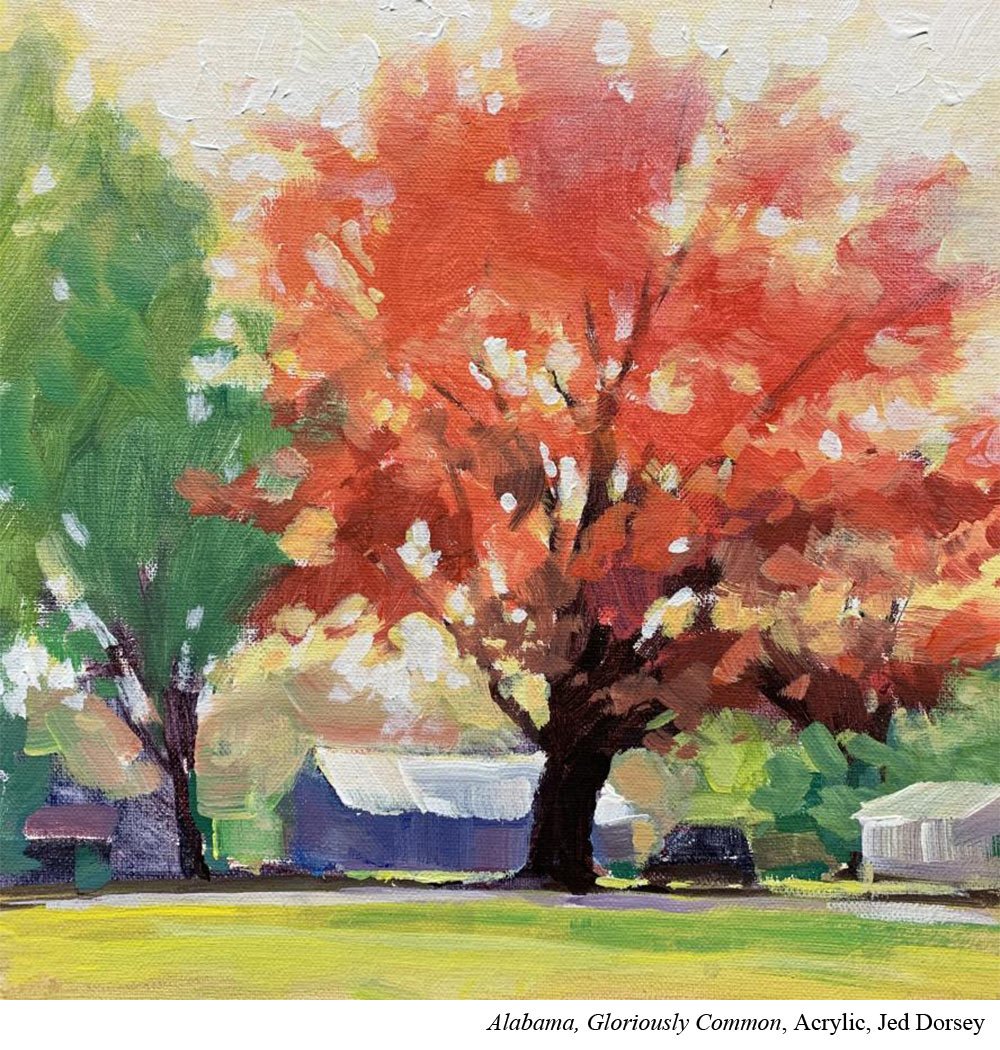The Power of Small & Fast: An Interview with Jed Dorsey
Jed Dorsey joined us for Ep.27. Today he’s back to discuss the mighty power of painting small and fast.
What benefits do you find for students who commit to 30 minute paintings? Why not wait for longer chunks of time to paint?
We all love the idea of long periods of time doing what we love, but the reality for most of us is that if we are waiting for that “perfect” time it never comes. But when you sit down to paint regularly - even for a short amount of time - you are going to grow. Incremental growth over the long haul creates monumental change.
Painting is from Jed Dorsey’s Painting Across America Challenge
Even if you have longer time available, are there other benefits from working small and fast that you may not get working for longer sessions?
Absolutely, there are benefits to working small and fast.
In one of the first workshops I attended, the instructing artist had us start out with a timed exercise. He simply turned over an hourglass and told us to paint a painting. And while it was difficult for me to do it at that time, I’ve since realized the benefit of an exercise that forces you to paint fast - even if it feels arbitrary.
What happens (perhaps not the first time, but if you practice it a few times) is that you start painting from your intuition more than from your brain. You know you have limited time, so you make quicker, bolder decisions and you don’t fuss over the smaller, less significant details. It often opens up a part of your creativity you didn’t know was there.
Painting is from Jed Dorsey’s Painting Across America Challenge
For your 30 minute paintings, what size surface do you suggest people work on and why?
I generally think a 6x6 or 8x8 is a good size. You can cover the canvas that size pretty quickly, so it’s not impossible to finish a painting in that time frame and still feel like you did a good job. Although, it is totally fine to take longer, and most people do.
How do you get set up before you paint in order to take full advantage of the 30 minutes? What do you need to set up before you hit go?
First of all, the paintings in our Miniature Painting Challenges do not need to be done in 30 minutes. That is not a rule, it is more of a guideline for us as instructors. We are trying to keep the lessons short and doable. That is the main point. We want everyone to be able to enjoy painting, and we know that time is a big factor in our lives. But even then, the lessons vary in length. If a painting needs 5 more minutes, I generally just take that time. So, I’d just say to be relaxed is important.
Painting is from Jed Dorsey’s Painting Across America Challenge
But like with any painting, having your supplies ready is always helpful. And possibly looking at the lesson 20 minutes before you plan on starting and seeing what color the canvas is toned and doing that would also be helpful if you are wanting to speed up the process.
Could you walk us through your process for a 30 minute painting?
It’s the same as a big canvas for me, just smaller. I think about the design and get that onto the canvas first. Then I start blocking in the main colors and values, refine and adjust for the longest time, and finally finish with anything specific that will make it complete.
I go for the big shapes and masses and overall design first.
After that I start refining and by the end I try to have added in some smaller detail, but that doesn’t need to be completely spelled out.
Painting is from Jed Dorsey’s Painting Across America Challenge
Any advice for how to approach the mindset side of things when trying something new like 30-minute paintings?
My main advice is to just give it a shot, but not to be too hard on yourself if you end up spending 45 minutes or an hour. The goal of art is to do it. And you did it, so yay!
How do you set up your colors for your 30 minute paintings?
I use a simple palette usually with the primary colors - a yellow, red & blue - plus white and black. I set them out on my palette in the corners and mix the secondary colors in between them. It keeps things simple and easy to follow.
In my mind, color harmony is more important than color accuracy. I’m not trying to mix exactly what I see in the reference. So, with my limited palette, I am happy with “close enough.”
Painting is from Jed Dorsey’s Painting Across America Challenge
Any final advice for someone thinking about taking on a 30 minute painting as part of their art development?
The goal of art is to do it.
If you want to express yourself creatively through painting, finding a solution that works for you and your schedule is of utmost importance.
Painting a little bit regularly is going to yield far greater results than you can imagine. Remember, incremental growth will lead to monumental change. It is the habit of painting regularly that you need to develop. All your future growth and success in art hinge on that.





